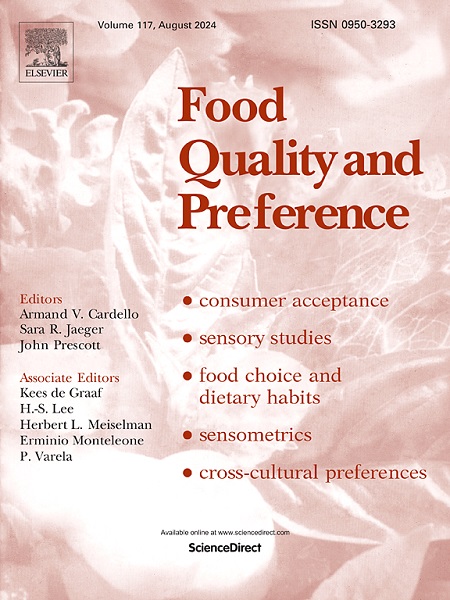(M)eat more plants: How category dimensions and inferences shape consumer acceptance of plant-based proteins
IF 4.9
1区 农林科学
Q1 FOOD SCIENCE & TECHNOLOGY
引用次数: 0
Abstract
A dietary shift to more plant-based and less animal-derived proteins is needed to counter environmental, public health, and animal welfare problems. Although many consumers find this important, consumers do not regularly consume plant-based proteins. Plant-based proteins are often perceived as one overarching category by consumers. We investigate a wider variety of relevant dimensions on which plant-based proteins might differ (e.g., the extent to which plant-based proteins mimic meat and dairy), which in turn might result in different consumer associations. We conducted a representative survey among Dutch consumers (N = 1002). Using structural equation modelling (SEM), we show that consumers categorise plant-based proteins (i.e., non-analogues, semi-analogues, analogues, and hybrids) along several predefined dimensions (analogy, processing, novelty, origin), and these dimensions predict acceptance through inferences (price, sensory appeal, convenience, familiarity, sustainability, health). This study demonstrates that (new) food alternatives are not one group but can be cross-categorised into multiple (sub)categories. Subcategories result in inferences that can sometimes be conflicting or even paradoxical, shaping consumer acceptance of plant-based proteins. By shedding light on how plant-based proteins are categorised and how this subsequently leads to common (mis)perceptions about certain product categories, we give directions for targeted interventions.
求助全文
约1分钟内获得全文
求助全文
来源期刊

Food Quality and Preference
工程技术-食品科技
CiteScore
10.40
自引率
15.10%
发文量
263
审稿时长
38 days
期刊介绍:
Food Quality and Preference is a journal devoted to sensory, consumer and behavioural research in food and non-food products. It publishes original research, critical reviews, and short communications in sensory and consumer science, and sensometrics. In addition, the journal publishes special invited issues on important timely topics and from relevant conferences. These are aimed at bridging the gap between research and application, bringing together authors and readers in consumer and market research, sensory science, sensometrics and sensory evaluation, nutrition and food choice, as well as food research, product development and sensory quality assurance. Submissions to Food Quality and Preference are limited to papers that include some form of human measurement; papers that are limited to physical/chemical measures or the routine application of sensory, consumer or econometric analysis will not be considered unless they specifically make a novel scientific contribution in line with the journal''s coverage as outlined below.
 求助内容:
求助内容: 应助结果提醒方式:
应助结果提醒方式:


